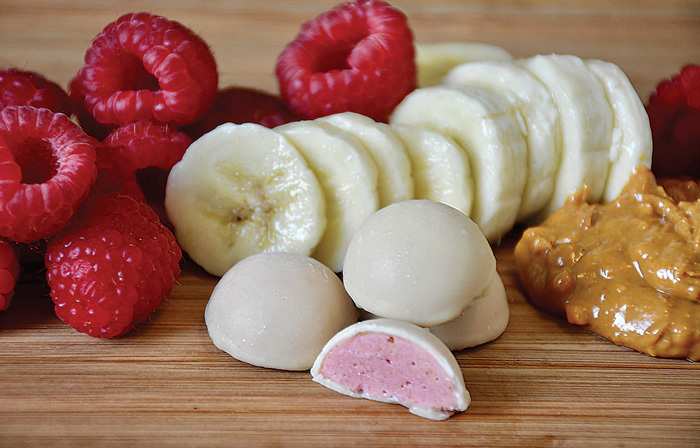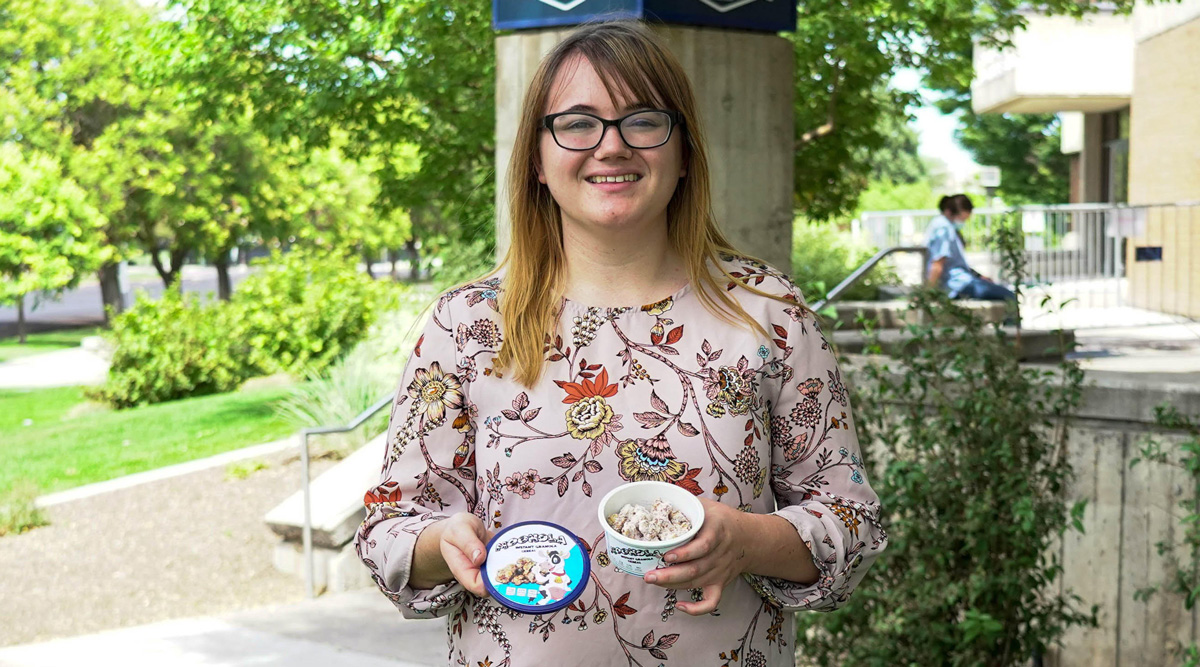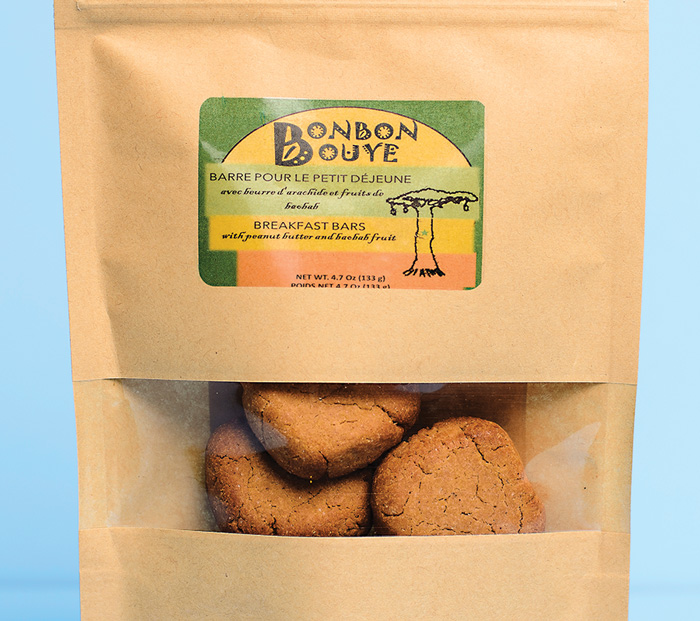
Resourceful Students Shift to Virtual Product Competitions
A look at the winning teams and their creative processes in the 2020 student product development competitions.
Article Content
Each year, students from around the world compete to develop winning food products in three different competitions at the IFT annual event. This year, like everything else at SHIFT20, the student product competitions were virtual for the first time. But that didn’t stop teams of talented students from developing and presenting unique products.
These competitions allow students to take the skills and knowledge learned in school and apply them to real-world situations. The three competitions include the IFTSA (IFT Student Association) and Mars Product Development Competition, Smart Snacks for Kids Product Develop-ment Competition, and Developing Solutions for Developing Countries.
Despite the unique challenges this year, a number of teams from colleges and universities around the globe found ways to continue collaborating from a distance, developing and perfecting new food products. The competition judges were “extremely impressed with the breadth and depth of information offered by our teams despite their transition to online collaboration,” says Julia Schmidt, chair of the Smart Snacks for Kids Competition.
Adapting the Competitions
This has been the year for changing traditions, and with colleges and universities conducting classes virtually, along with the new virtual format for IFT20, the guidelines for student product competitions had to change too. IFT leaders worked closely with judges to determine which parts of the competition would be unrealistic for teams who were working together virtually rather than in labs on their campuses. For instance, the tasting components of the product development competitions were eliminated, explains Amy Clarke Sievers, IFTSA staff liaison.
Rather than judging on taste, this year’s judges scored based on “delivery on expectations.” For instance, Moonola from Utah State University, which won the Smart Snacks for Kids competition, did a product demonstration during the team’s call “that really impressed the judges and set them apart from the competition,” Schmidt says.
The main limitations presented by virtual collaboration included shelf life and sensory data. Because the teams had no opportunity to conduct long-term shelf-life studies, especially microbiological testing, they instead analyzed the shelf life of their individual ingredients or looked for data from similar existing products, Schmidt says. For sensory data, most teams created a testing plan that outlined parameters of interest and identified benchmarks. Because of the challenges, shelf life and sensory data were de-emphasized for scoring, while the written proposal was emphasized more.
Meet the Winners
Each of the three competitions attracted a number of highly competitive entries. Here’s a look at the winners.
The Smoothie Bites team from Cornell University took top honors in the IFTSA and Mars competition sponsored by Mars Wrigley Confectionery. “Smoothie Bites are delicious, frozen, bite-sized fruit smoothie pieces with a crunchy yogurt coating,” the team’s product description reads.
After several brainstorming sessions to develop ideas, the 10 team members agreed on Smoothie Bites as their favorite concept. The team’s biggest challenge was creating the yogurt-flavored coating, says Alexandra Hall, PhD candidate and team co-captain with Kelsey Sheldon. “Ultimately, we were able to form a coating that met all of the criteria that we were aiming for, which was a smooth, crunchy, yogurt-flavored coating that did not form a sticky mess while eating the bites and was also easily blendable in a smoothie.”
While the COVID-19 shutdown meant the team had to finish its work virtually, they had completed all of the technical R&D work and finalized the formulation before Cornell’s campus closed. “We were ahead of schedule, which was really great because after the closing of campus we could complete everything we needed to do virtually,” Hall says. “In the last few months, we were primarily writing the final proposal, finishing up the packaging design, and practicing for the final presentation.”
In addition to Sheldon and Hall, other team members included Joice Pranata, Gracyn Levenson, Jesse Saltzman, Nicki Bukovac, Taieesa Peshkovsky, April Huang, Rocio Hernandez, and Philip Teixeira DaSilva.
The Moonola team from Utah State University won first place in the Smart Snacks for Kids competition. “Moonola is a high-protein, instant granola cereal,” says team leader Savannah Branson. “The idea was to have an easy, on-the-go cereal product that just requires water, because sometimes you’re just out of milk. The packaging serves as its own bowl, and inside are granola pieces coated in nonfat dry milk and dry colored powder.”
Like every team, the Moonola group faced challenges. Initially, they wanted to use a spray dryer to coat their product with nonfat dry milk, but that equipment wasn’t available at the university. “Instead, we used canola oil to get the nonfat dry milk coating to stick to the granola pieces, which led to problems with oxidation,” Branson says. “So we worked with antioxidants to help combat that to extend the shelf life.”
In addition, the team had to create packaging that was waterproof and could be shaken around by kids without tearing or breaking. The pandemic presented additional challenges: The team, which included Branson, Melissa Marsh, and Jared Buhler, was only able to meet a couple of times between March and July, and some of the ingredients they ordered were delayed in production and shipping.
“It meant a lot more of the project was done online collaboratively, and we were unable to complete tests we normally would, like sensory and shelf-life testing,” says Branson. “Our team really pulled together though. We collaborated well online, and when we were able to meet in person, it was extremely productive.”
Team PATH at Montana State University won the Developing Solutions for Developing Countries competition for its creation of Bonbon Bouye and collaboration with women farmers in Kaffrine, Senegal. “Bonbon Bouye is a peanut nutrition bar made by the smallholder women farmers in Kaffrine, Senegal, and the Food Product Development Lab of Montana State University,” says Edwin Allan, team leader. “Bonbon Bouye contains all nine essential amino acids from the combination of cowpea flour and corn flour, as well as vitamin C and antioxidants from the addition of baobab powder.”
The team came up with the idea for Bonbon Bouye through focus group discussions with four communities in Kaffrine. Community members suggested the ingredients, and the team tried several combinations before developing the first prototype.
“Our principal challenge was the distance between us and our research partners in Senegal,” Allan says. “Our main aim was to make a culturally acceptable and nutritious product, so the women farmers in Senegal had to try each prototype and give us feedback and recommendations for improvement. This involved shipping prototypes to Senegal and paying a second visit to Senegal.”
Along the way, the team realized that the ovens in the four communities were owned by the men, and the women farmers needed their own ovens to bake the product. “Bonbon Bouye was made to improve the income generated from postharvest processing in rural Senegal,” Allan says. “Cowpea and corn are only milled into flour, and peanuts are either roasted or milled into peanut paste. Bonbon Bouye allows the women farmers, who are traditionally responsible for processing the harvest, to double their profits.”
Along with Allan, other team members include Cullen Kinnare, Emily Raber, Haley Darlinton, and Amber Clifton. Their product is one of many projects the Montana State University Food Product Development Lab is working on to use food science to support indigenous food systems, Allan says.









